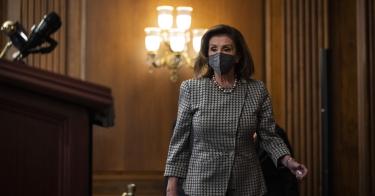Negotiations on “Build Back Better,” the Biden administration’s trillion-dollar social welfare package, have collapsed. But the exercise demonstrated that the Left has not abandoned its quest to supplant private health insurance with government-run health care. That’s disturbing for several reasons. The majority of Americans get their health care coverage from their place of work, and employer-based health plans tend to offer patients greater access to a broader range of health care providers and services. While most Americans still get their health coverage through employer-based plans, the number doing so is declining. In 2000, two-thirds of non-elderly Americans got their coverage through their employers. By 2018, that number had declined to 58 percent. The decline in employer-based coverage was most prevalent among those earning less than four times the federal poverty level ($51,520 in 2021).
>>> U.S. Health Care Policy: 2022 Will Be a Really Confusing Year
While several factors have contributed to this trend, government policies have played a key role. The Left’s bid to cripple the private health insurance market took a big step forward with passage of Obamacare. Among other things, the Affordable Care Act introduced middle-class subsidies for government-run health care. Between 2014, when the law took full effect, and 2016, enrollment in employer-based coverage dropped by 3.6 million. The Build Back Better proposal would have altered the health coverage landscape once again. It would have created a new government-run health program, made existing Obamacare subsidies more generous and extended them to more people, regardless of income. It also proposed easing the requirements to qualify for subsidies for those with access to employer-based coverage.
These and other changes would have steered more people out of their existing coverage and toward the government-run plan. The Congressional Budget Office estimated that the policies embedded in the Build Back Better plan would result in 2.8 million fewer people with employer-based coverage. And that’s problematic. Employer-based health plans typically offer more medical providers to choose from and access to more medical services than government plans do. A 2021 Kaiser Family Foundation survey found that “Sixty-seven percent of covered workers in firms offering health benefits work in firms that offer one or more PPOs.” In contrast, a Heritage Foundation report found that last year only 15 percent of Obamacare plans offered PPOs (down from 57% in 2014). Job-based coverage has also been a testing ground for innovative strategies for health care delivery, improving outcomes and controlling costs. For example, employer coverage has been a catalyst for the rise in Health Savings Accounts. According to a recent employer survey, enrollment in HSA-style plans, which combine a high deductible insurance plan with savings account mechanism, has grown from 3 percent in 2006 to 40 percent in 2021.
>>> California Tries and Fails Again to Create Government-Controlled Health Care System
Employers have also launched initiatives to promote wellness and expand access to care. Today, 59 percent of all employer-based plans include wellness programs, such as smoking cessation, weight loss, or other lifestyle or behavioral coaching. Many are looking to continue and expand ways to improve access to care for workers. A recent survey of large employers found that 76 percent of employers plan to keep telehealth benefits put in place during COVID; over half are considering adding on-site clinics. New initiatives focused on price transparency and value-based purchasing are also on the rise. These favorable developments do not mean there are no problems with employer-based coverage. The unlimited, tax-free benefits contribute to rising premiums and costs. Its design disproportionately benefits highly compensated employees with large tax liabilities. Moreover, tethering health care coverage to the place of work denies personal ownership, limits coverage portability, and does not easily accommodate a changing labor market, leaving many out altogether. These shortcomings can be overcome by modernizing employer-based coverage through consumer-centered reforms. And that’s a far wiser course than the government-based approach of the Left. Build Back Better was just the tip of the iceberg in the Left’s drive to undermine the private health insurance market and herd everyone into government-run health programs. Broader efforts, like “Medicare for all” and the so-called “public option,” would ultimately eliminate employer-based coverage as we know it.
The private, employer-based market is where the majority of American get their health care and is still the strongest barrier against full-blown, government-run health care.
This piece originally appeared in the Sacramento Bee




